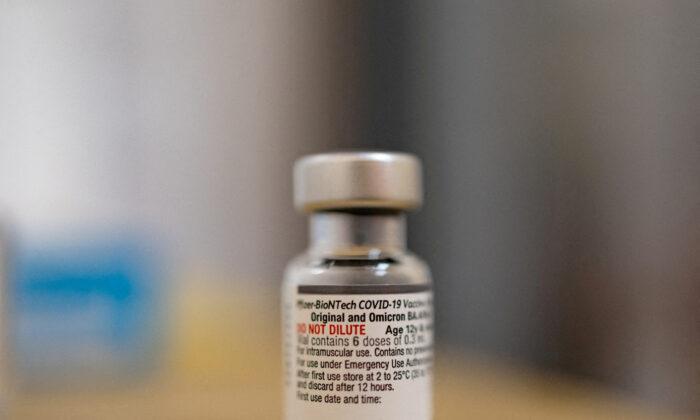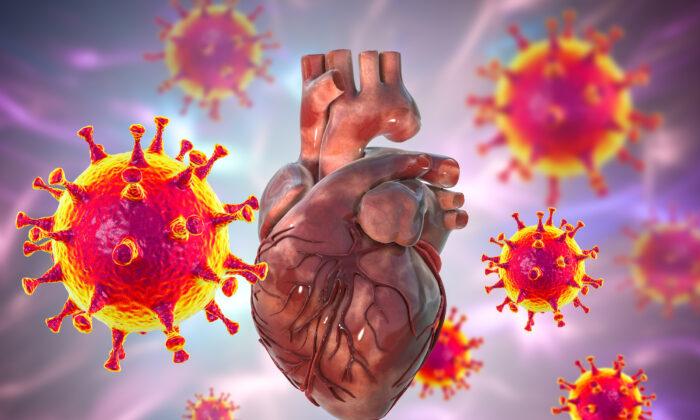Commentary
Over the past four months, the White House, Centers for Disease Control and Prevention (CDC), and Food and Drug Administration (FDA) have vigorously pushed the new bivalent vaccine on all eligible Americans. In his final
White House briefing, Dr. Anthony Fauci stated, “Please, for your own safety, for that of your family, get your updated COVID-19 shot as soon as you’re eligible to protect yourself, your family, and your community.”
Yet, only
12 percent of Americans 5 and older have received the updated booster. Meanwhile, just over 30 percent of senior citizens have gotten the bivalent dose. In attempts to increase vaccine uptake, the Biden administration has
announced a six-week campaign budgeting more than $475 million to expand mRNA vaccine outreach. $350 million will go into community health centers to promote booster awareness while another $125 million will be devoted “to national organizations that serve people with disabilities and older adults to support community vaccination programs and efforts.”
Instead of spending hundreds of millions of dollars trying to persuade Americans to get a fourth shot they likely don’t need, the authorities ought to take a step back and examine why no one is getting the new booster.
Low bivalent vaccine uptake may, at least in part, stem from the
disastrous public launch in September when the new shots were approved on the basis of testing on eight mice. No human data existed at the time, yet the new shots were authorized under the much-abused “emergency use authorization” mechanism. This time, even the media’s most trusted public health experts were expressing concern and skepticism. In an interview with the
Wall Street Journal, FDA vaccine advisory member Dr. Paul Offit stated, “I’m uncomfortable that we would move forward—that we would give millions or tens of millions of doses to people—based on mouse data.”
On the concern of safety, it was the CDC and FDA’s responsibility to assure the public that the updated booster didn’t carry significant risks like the primary series. Knowing the alarming prevalence of vaccine myocarditis, convincing tens of millions of healthy men to get the new shot was already a hard sell. As the most
robust research (Kaiser Permanente) on vaccine-induced myocarditis shows, roughly 1 in 1,800 young men are injured after the second dose. Long-term effects are unknown, but
current studies show over half of myocarditis patients had an abnormal cardiac MRI and a third were not fully recovered at the three-month check-up.
What reassurance have CDC officials given to those concerned with the most widespread serious adverse event caused by mRNA vaccination? According to
CDC official Dr. Sara Oliver, “We know that the myocarditis risk is unknown but anticipate a similar risk to that seen after the monovalent vaccines.”
The novel COVID-19 vaccines have already injured an untold number of young, healthy men and women, and the pitch from public health authorities for a second booster shot is “we don’t really know what the risks are.”
If safety concerns remain, perhaps the first round of human data on the bivalent vaccine would show promise. Yet all the latest studies are highly confounded, ambiguous, or otherwise flawed.
Late in September, Moderna published a disappointing
study looking at the immune response to an earlier version (BA.1) of the latest shot. While they did find a rise in antibody titers, the bivalent vaccine cohort had a
higher number of COVID infections than the original booster cohort. The study sample was so small that definitive conclusions were virtually impossible to make. A few weeks ago, Moderna released
newer data in 500 participants showing their bivalent BA.5 booster produced five to six times higher antibody levels than the original strain booster.
Pfizer also released their
antibody data for the updated bivalent vaccine, reassuring the public that the mass administration of the bivalent vaccine is a necessary next step in combating COVID-19. As stated in the press release, the “Omicron BA.4/BA.5 neutralizing antibody titers were approximately 4-fold higher for the bivalent vaccine compared to the companies’ original COVID-19 vaccine in individuals over 55 years of age.”
As promising as all this data may have seemed, these findings were far from persuasive or concrete. A mere “increase” in antibody titers doesn’t necessarily translate to any sustained protection against infection or severe disease. Pfizer has
conceded there’s “no established correlate of protection” between antibody levels and immunity.
While previous data did little to persuade the public to line up at pharmacies to get their new shots, the CDC released the first study on
bivalent vaccine effectiveness on Nov. 22. Unlike nebulous antibody figures, this study examined vaccine effectiveness in the real world in adults 18 and older. While adults 18 to 49 who had gotten bivalent boosters were 43 percent less likely to be infected than their unvaccinated counterparts, older cohorts were far less protected. Those ages 65 and older were only 22 percent less likely to get sick with COVID-19 than unvaccinated individuals of the same age.
As tangled as these results are, they must be taken with a grain of salt. The authors of the study rightly note the findings should be “interpreted with caution because unvaccinated persons might have different behaviors or a fundamentally different risk for acquiring COVID-19 compared with vaccinated persons.”
“The findings in this study are subject to at least six limitations,” they added.
To make matters worse for the public image of the bivalent vaccine, CDC head Rochelle Walensky has shown in real time how ineffective the latest shot is. Walensky
twice tested positive for COVID-19 a month after receiving her bivalent booster shot (the window which should have the
“greatest protective effect” according to Dr. Vinay Prasad). She tested negative a few days after her first positive result, but her symptoms appeared to have strangely rebounded on Oct. 30. In light of the new CDC study, Walensky’s re-infection makes perfect sense: Observed bivalent vaccine effectiveness is less than 30 percent in her age cohort—far from the “90 percent effective” health agencies promised with initial doses of the vaccine.
Putting aside the only remaining, arguable rationale for further boosting (those at higher risk), the FDA and CDC have greenlit the new Omicron booster for kids under 12. Moderna’s booster has been authorized for children 6+ and the Pfizer booster for 5 and older.
As USA Today
notes: “The companies have not yet completed clinical trials of the booster in younger children. The FDA decided the change to a bivalent vaccine is not likely to have a different effect or risk profile than the earlier shots.”
The totality of evidence for the bivalent booster shot has failed in persuading the American public to get jabbed again. The updated vaccine should never have been approved on the basis of mouse testing. The studies published after approval (that order should have been in reverse) were hardly reassuring. The only study on vaccine effectiveness shows highly limited protection in the most vulnerable groups.
The administration may spend millions of tax-payer money promoting the new shot, but until vaccine standards are improved, “emergency” powers are left alone for real public health crises, and the White House COVID response team comes clean on the real dangers and uncertainties surrounding mRNA vaccines, institutional trust may never recover.
Views expressed in this article are opinions of the author and do not necessarily reflect the views of The Epoch Times.





